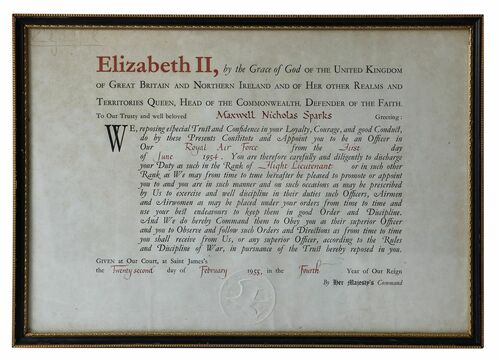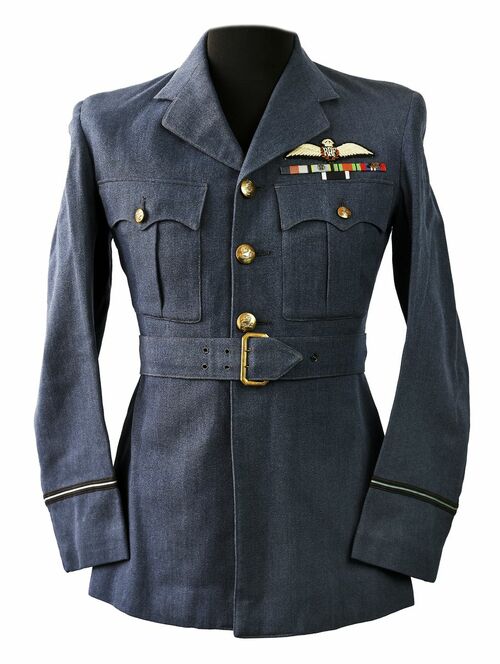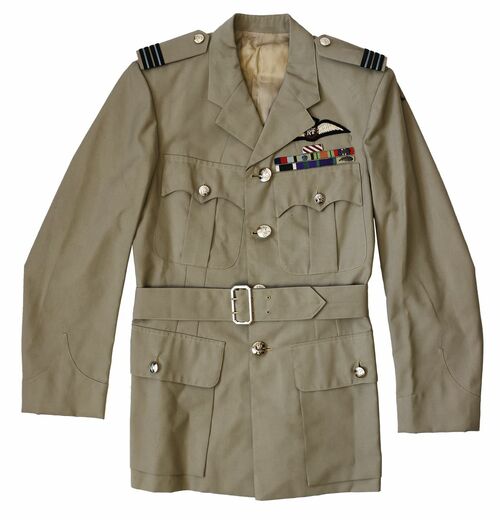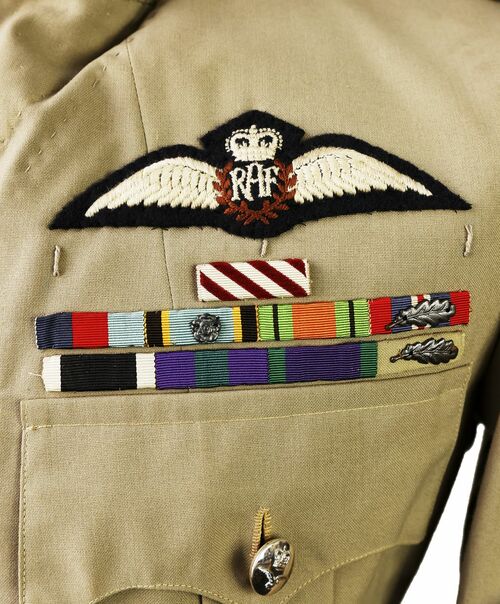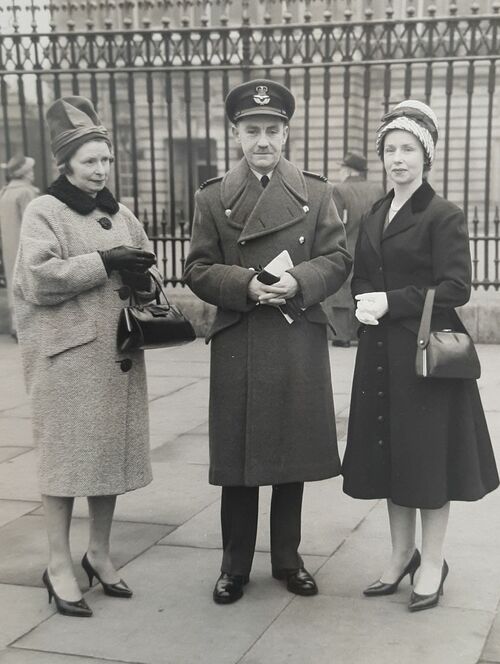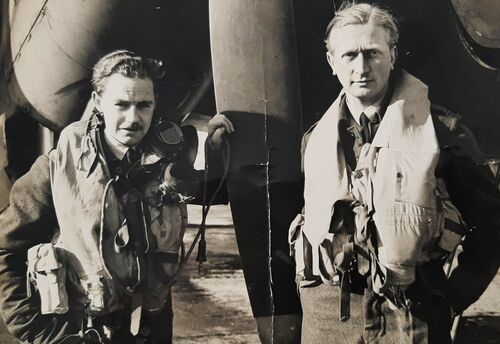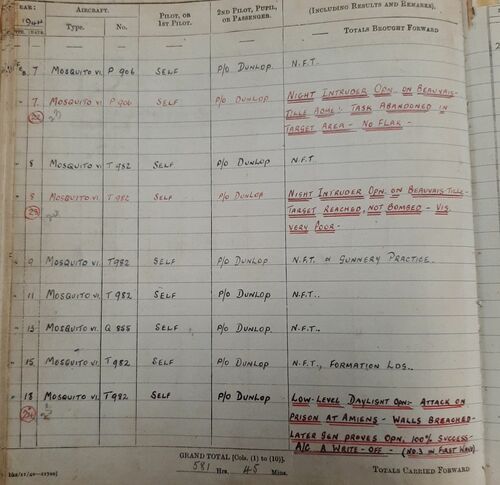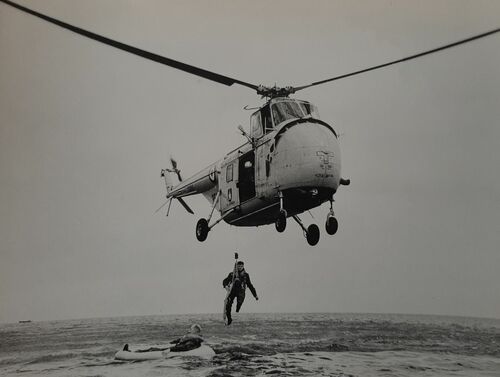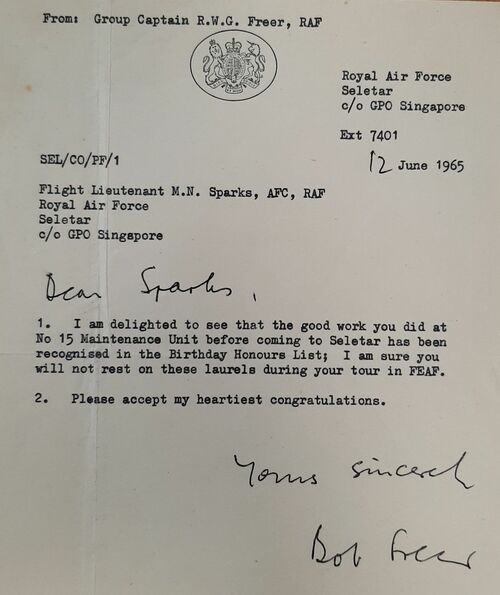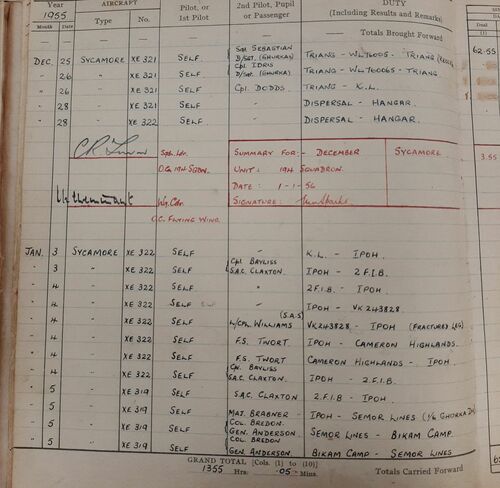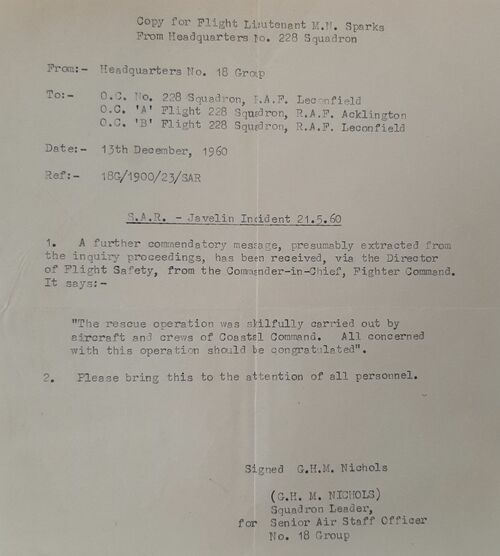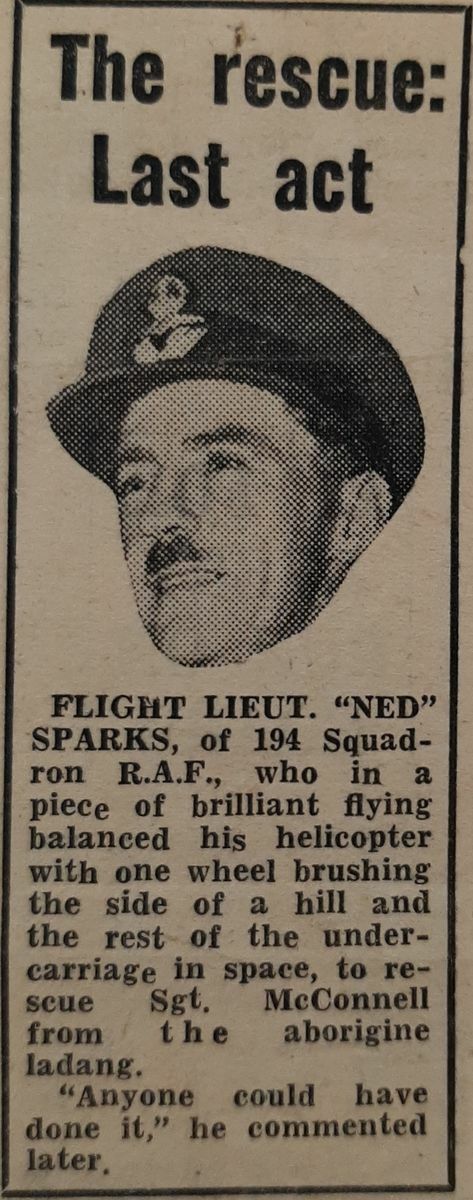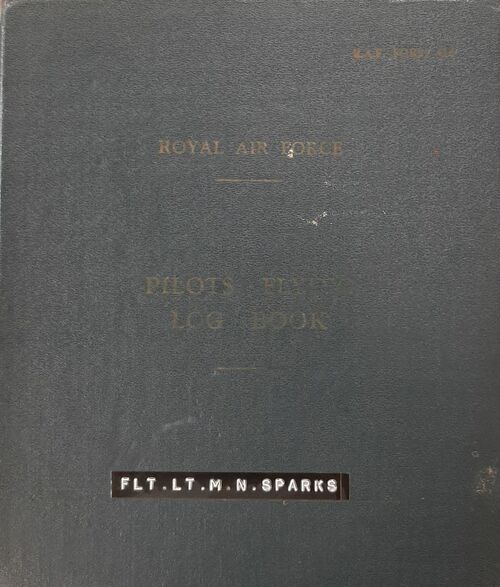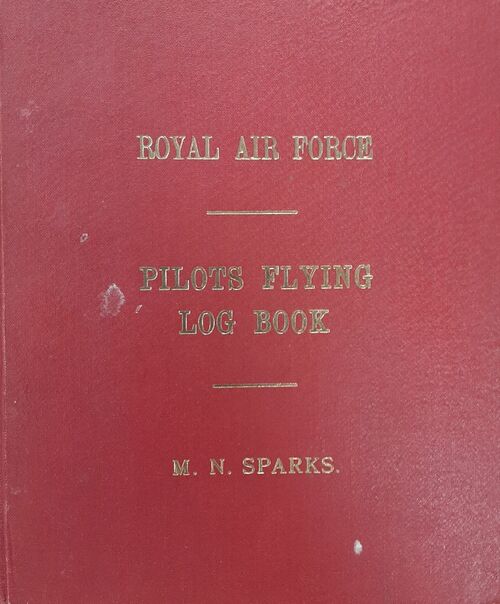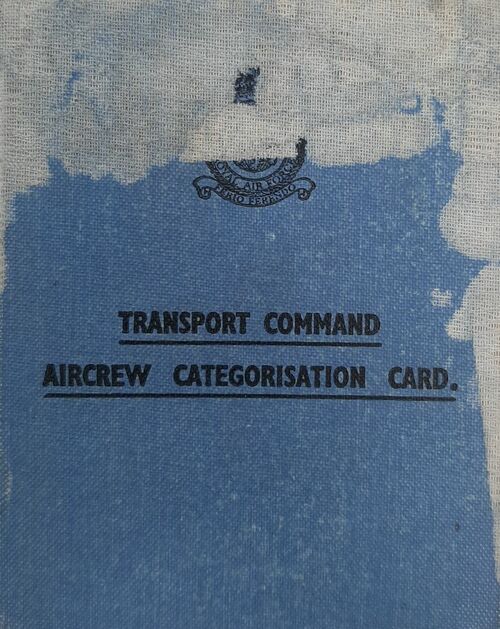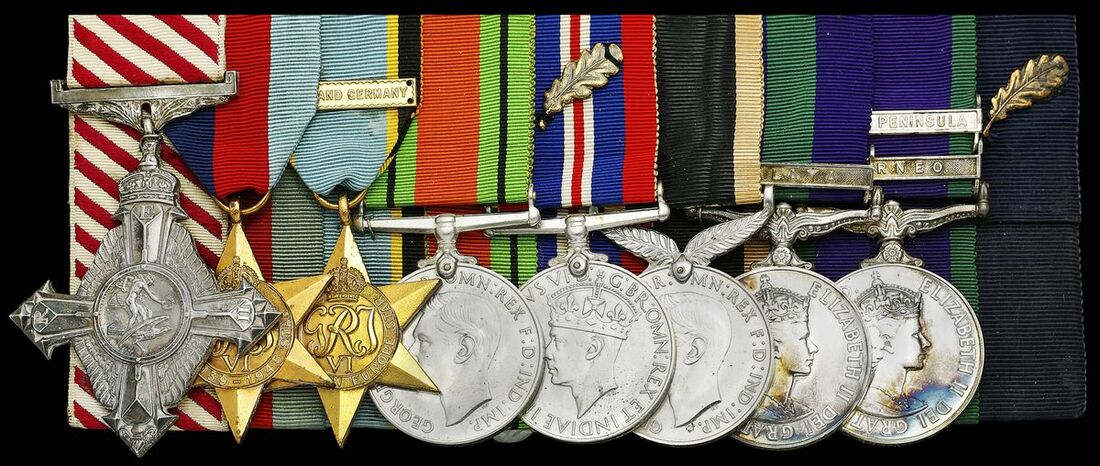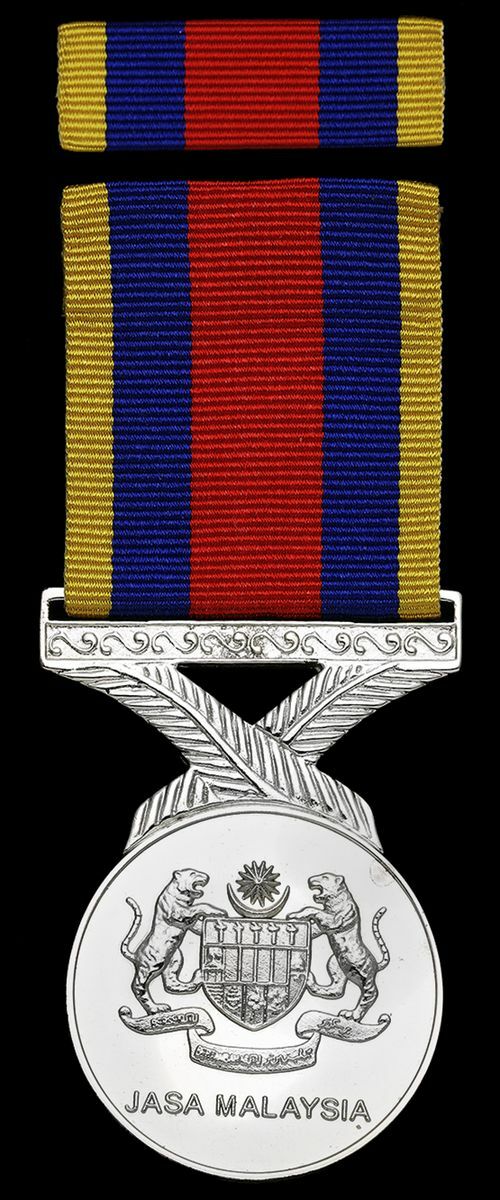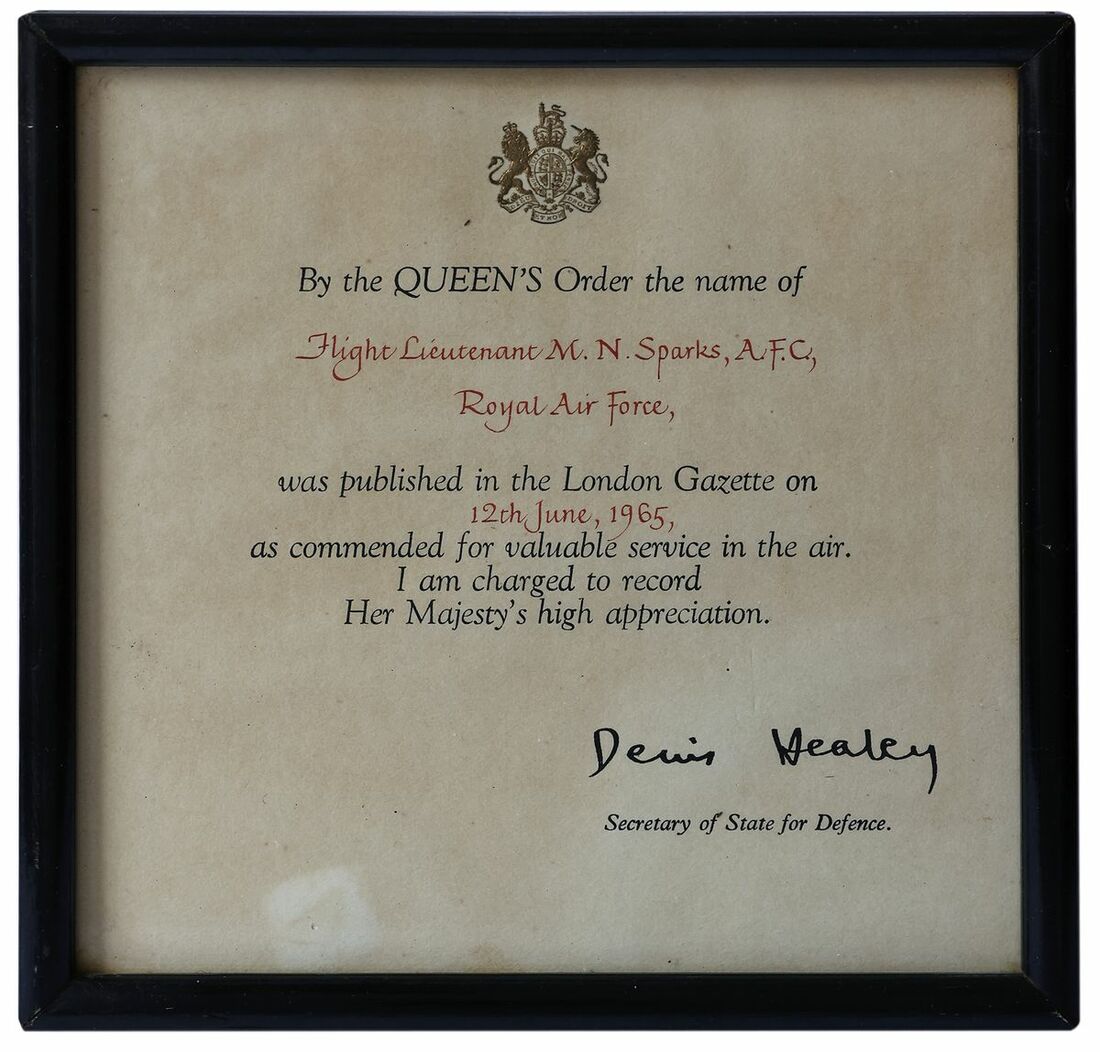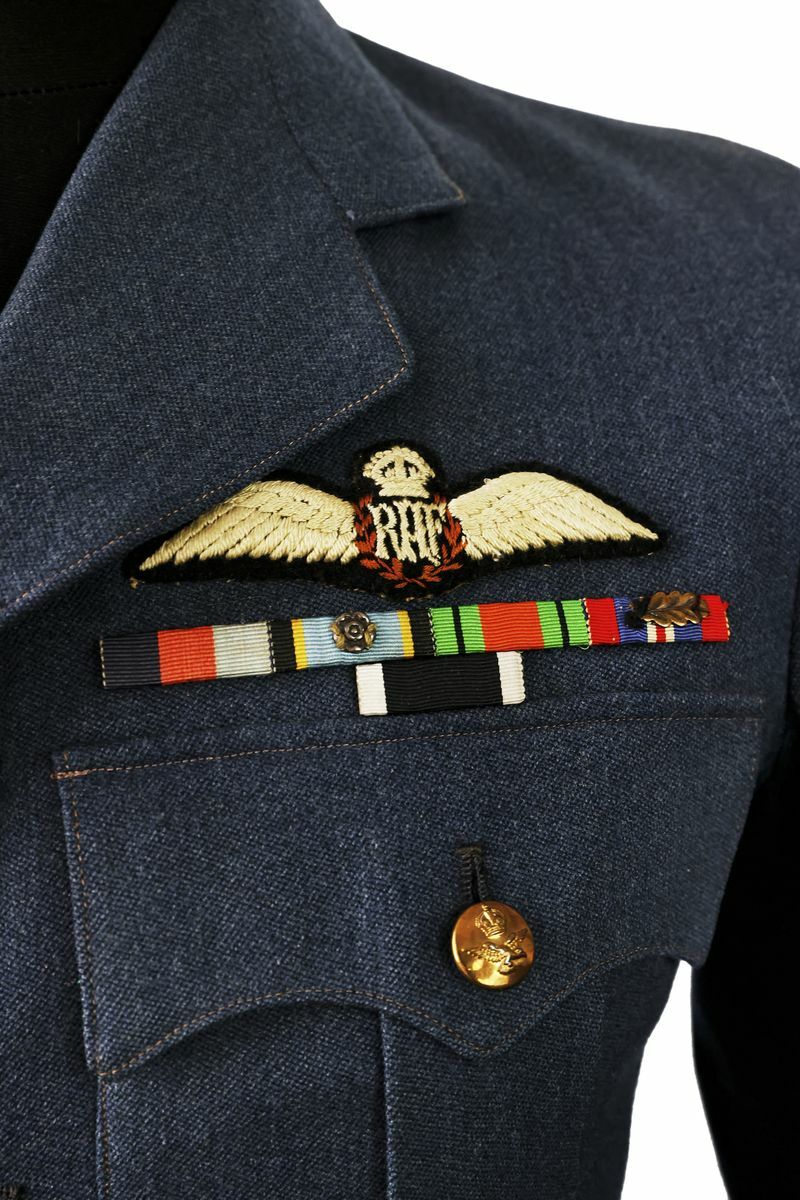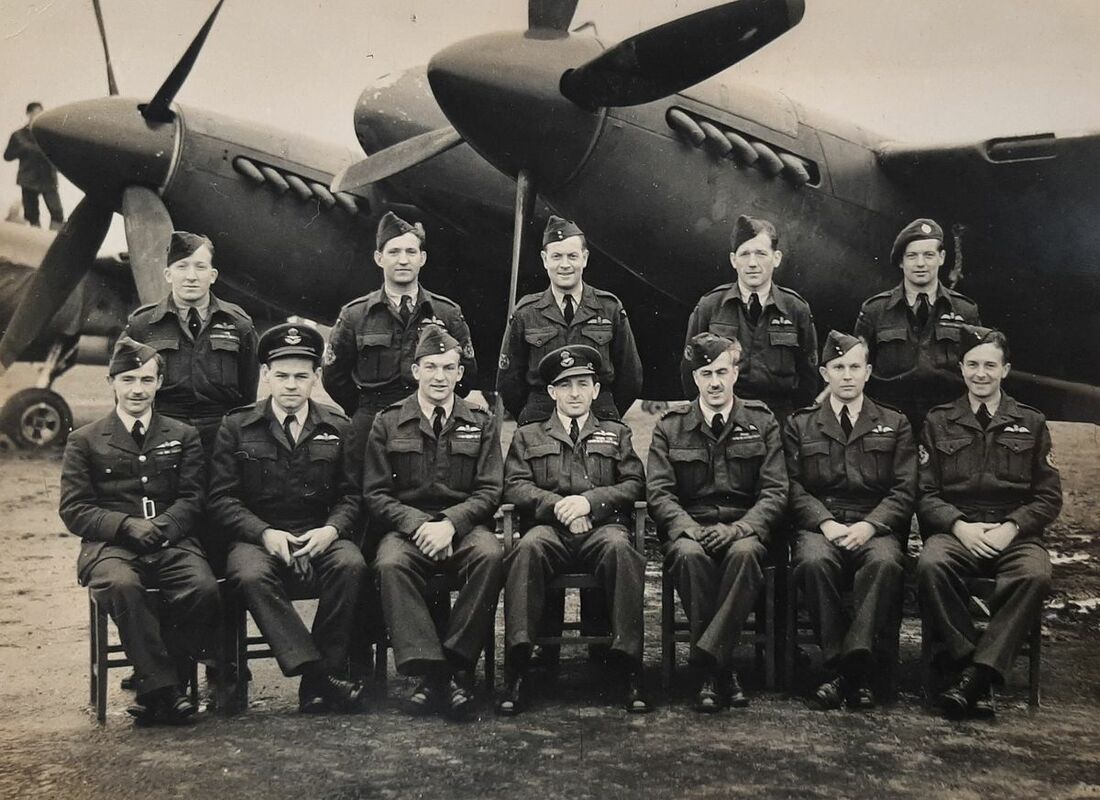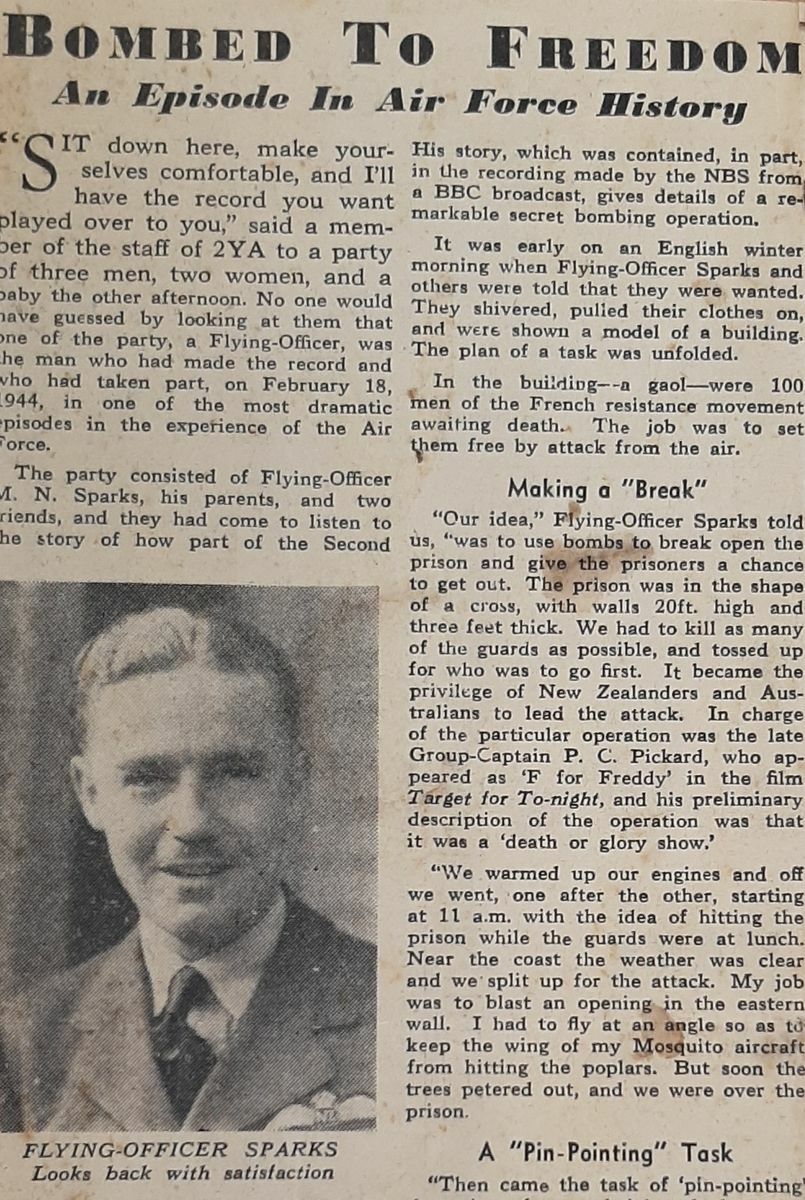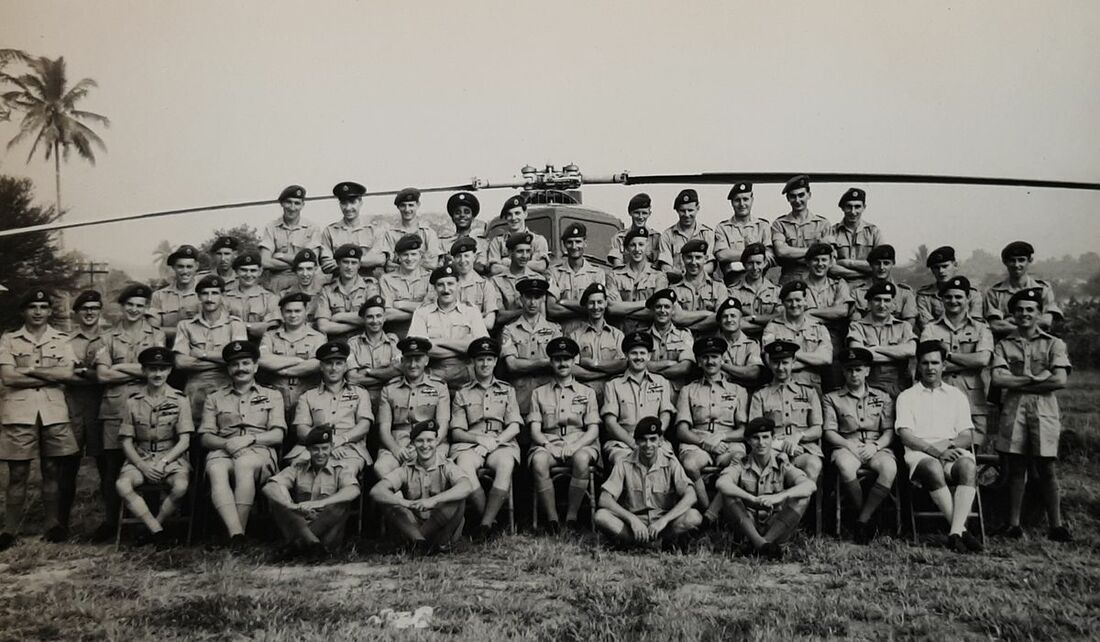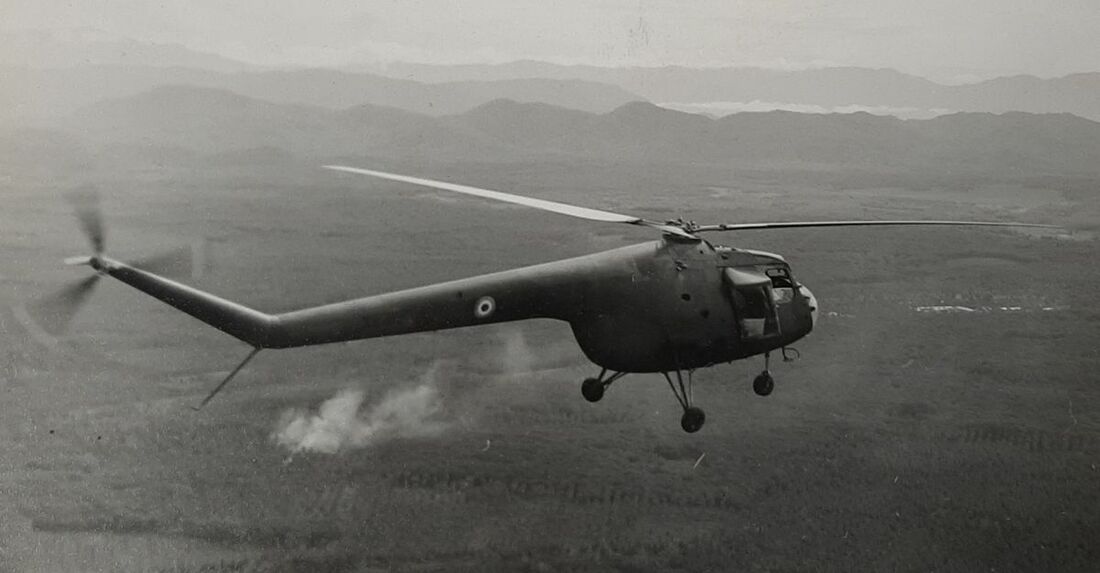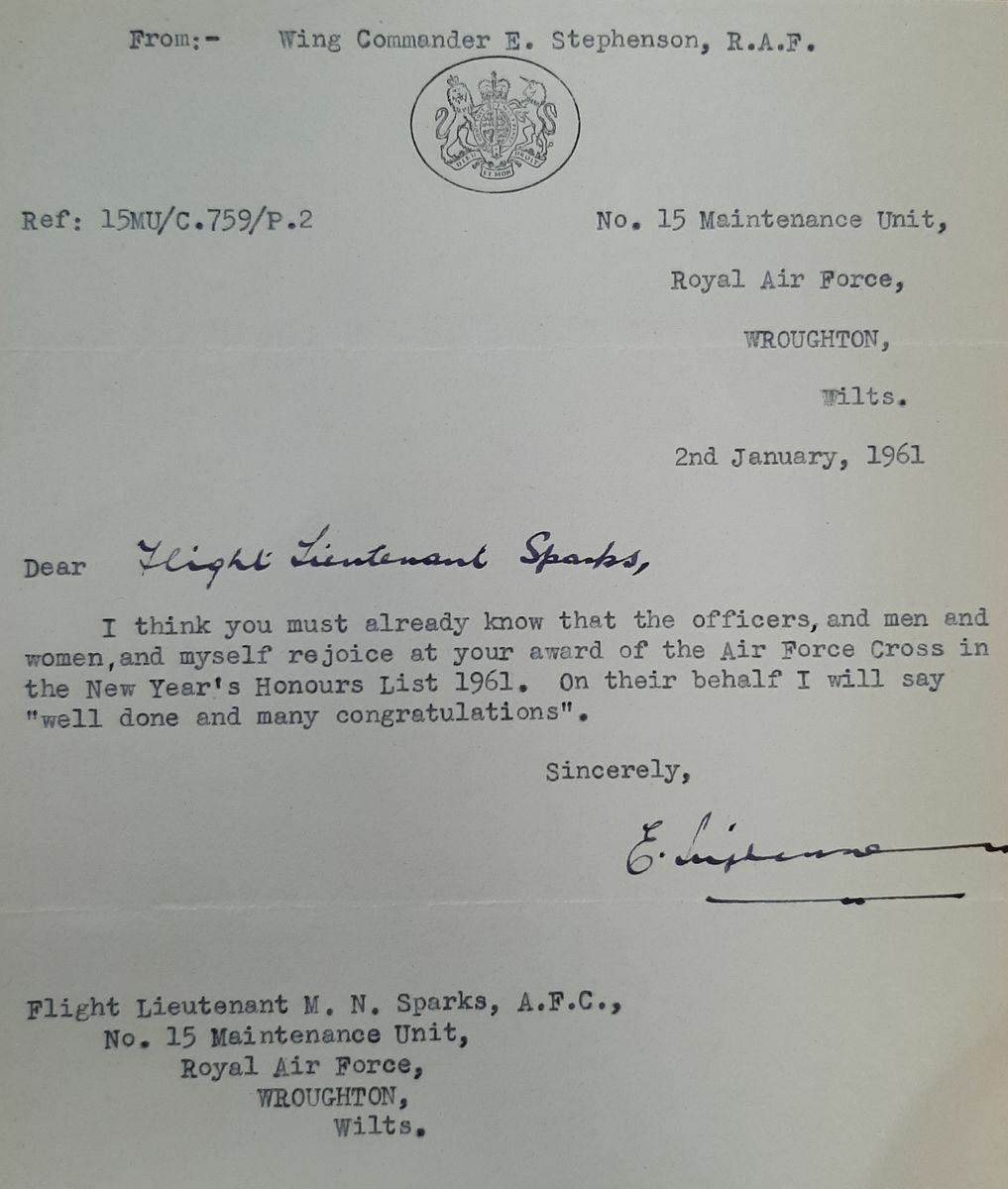Auction: 23002 - Orders, Decorations and Medals
Lot: 132
'"Whoever says it's a piece of cake is a bloody liar," said "Black" Smith as they set their return course. "Now it's done, I'm completely shagged - spent"'
The words of Squadron-Leader Smith, first Captain in during the Amiens Prison Raid, And the Walls Came Tumbling Down by Jack Fishman, refers.
A superb and complete 'Operation Jericho - Amiens Prison Raid' and 1961 A.F.C. group of nine awarded to Flight Lieutenant M. N. Sparks, Royal New Zealand Air Force, the last survivor of the famous raid which brought down the walls of Amiens Prison with pin-point accuracy, freeing hundreds of Resistance fighters held captive within
Sparks went in with 'Black' Smith's section and was the third Captain to drop his bombs; he later flew as a helicopter pilot in Malaya and Borneo, conducting transport and casevac operations which even saw him pulling members of the Special Air Service out of tough spots
Air Force Cross, E.II.R., the reverse officially dated '1961' and further engraved 'M N Sparks'; 1939-45 Star; Air Crew Europe, clasp France and Germany; Defence and War Medals 1939-45, with M.I.D. oak leaf; New Zealand Service Medal 1939-45; General Service 1918-62, 1 clasp, Malaya (Flt Lt M. N. Sparks. R.A.F.); General Service 1962-2007, 2 clasps, Borneo, Arabian Peninsula (Flt. Lt. M. N. Sparks. R.A.F.), with M.I.D. oak leaf denoting Queen's Commendation mounted on blue riband separately; Malaysia, Pingat Jasa Medal, with its case of issue, the British awards mounted court-style as worn, sold together with his original, rebound Flying Log Books named 'M. N. Sparkes' to the front cover, good very fine (9)
A.F.C. London Gazette 31 December 1960.
Q.C.V.S.A. London Gazette 12 June 1965.
Maxwell Nicholas Sparks was born at Auckland, New Zealand on 30 December 1920 and trained as an assistant chemist before enlisting. Joining the Royal New Zealand Air Force he began to fly as a Flight Sergeant on 18 August 1941 with No. 3 Elementary Flying Training School. Flying regularly he passed on to No. 2 Service Flying Training School at Woodburne where he trained on Oxford and Harvard aircraft before moving on to No. 6 Flying Training School, Little Rissington. Finally posted to No. 17 Operational Training Unit at Upwood Sparks was finally confirmed as ready for active flying and posted to No. 487 (New Zealand) Squadron at R.A.F. Feltwell on 12 October 1942.
Operational Flying
Despite this it was some months until he was to see action, part of two night raid over Rotterdam Docks on 28 and 29 March. Sparks flew on both occasions in a Ventura bomber numbered 'X788'. Another swipe at Rotterdam Docks on 4 April saw his aircraft, now number 'Z 461' hit in the port engine by flack. Further raids were to follow throughout the Spring and Summer on Zeebrugge, Caen and Cherbourg.
The Squadron was re-equipped with Mosquito mid-August 1943 they spent the rest of the Summer training in its use. In getting use to the controls of the new craft Sparks had something of a scare, on 27 September he skidded on a log while landing and crashed. A low-level raid over Pont Chateau Power Stationed, showed further signs of a learning curve with his Mosquito being hit by the blast of its own bombs detonating.
Amiens Prison Raid
Flying several more raids into 1944 Sparks was more than familiar with the new machine when 487 Squadron were selected to take part in one of the most daring raids of the war. The plan for the Amiens Raid called for three waves of six Mosquitos, the first being 487 Squadron under Smith, the next 464 Squadron under Iredale and the last 21 Squadron under Dale (Medals sold in these rooms, November 2022). The job of the first wave - including Sparks - was to breach the walls of the prison, with the second wave targeting the guards and the third wave held in reserve, should the raid prove a failure they were to destroy the prison entirely. Sparks' aircraft was to be unusual in one respect, it was fitted with a camera for the attack, the only other Mosquito so equipped were Group Captain Pickard's and a Film Production Unit vehicle piloted by Flight Lieutenant A. Wickham. Unlike the other two Sparks was going in with the first wave and indeed with the first section of the first wave, captaining the third aircraft to drop its bombs.
The weather held up the raid for some days but as soon as it had cleared sufficiently the pilots prepared for take-off. Some worried that the break in the weather would not be enough, including Sparks, And the Walls Came Tumbling Down by Jack Fishman, refers:
'New Zealander Sparks sat at his controls thinking that if this had been an ordinary operation it would almost certainly have been scrubbed out or postponed to another day, but it wasn't an ordinary job. Ever day, perhaps every hour, might be the last of those men and women in Amiens prison, so although it was no kind of weather to go flying in, he knew they must.'
Working through the poor weather they broke out over the coast and made it to France. Flying low, the formation made it just three minutes late to the Route d'Albert and streaked towards the Amiens so low their wings brushed the treetops, And the Walls Came Tumbling Down refers:
'The road was lined with tall poplars, and Pilot Officer Sparkes [SIC], one of the two captains accompanying their Wing Commander in the first wave, found they were flying so low that he had to keep his aircraft tilted at an angle to avoid hitting the tops of the trees with his wing.'
The first man in was Smith, who commented on the perfect formation flying of his section after the raid, stating:
'For safety we flew in somewhat loose formation until we came near the run in and then everybody tightened up, wing-tip to wing-tip.
We flew at the lowest possible height, so that we could place our bombs exactly at the bases of the wall.'
(The Amiens Raid secrets revealed refers)
Smith was astonished when his bombs appeared the smash directly through the wall. It was later found that the structure was more fragile than thought and bombs sliding over the icy ground would go through them rather than stop. Sparks' logbook states he was 'No. 3 in first wave', although evidence from his camera covered The Amiens Raid secrets revealed suggests he may in fact have been second, it goes on to state:
'Pilot Officer Sparks followed Smith, a few feet to the north and again at a height of 10 feet. The most likely positions for the impact of the bombs from Sparks' aircraft were:
On the south wing of the main building, close to one Smith's bombs.
Against the west end of the principal prison building.
On the southern end of a small building, outside the west wall.'
When his bombs released Sparks' camera automatically took a series of images, with one proving to be an iconic image from the raid. However by the time the delayed fuses detonated they were already speeding away towards the coast, still flying low to avoid detection. As they made the coast a concealed pill box containing a flack gun opened fire upon the formation. Sparks was hit, taking a hit to the cowling of his starboard engine and also losing a chunk of the wing surface two feet across. Despite this the legendary durability of the Mosquito and the flying ability of Sparks proved to be the equal of nursing the stricken aircraft over the channel.
Smith and Jennings- the third member of the section- landed first, making way for the damaged Sparks. His was to be a perilous decent, as related in And the Walls Came Tumbling Down:
'As they headed in fast on the approach he concentrated on the runway, wanting, but not daring, to look at the shattered wing that was a stone-cold certainty to knock his stability for six. It didn't disappoint - with a juddering wallop they met the ground, an undercarriage leg collapsed and they pancaked, slewing all over the place but finally, thankfully, stopping - reasonably in one piece. Sparks measured that gaping wing hole to check his estimated size of it. The guess had been almost right to the inch.'
Operation Overlord
Despite his near miss Sparks was soon back at it, taking part in Night Intruder Operation just two days later, although this was later abandoned due to low cloud. Throughout the rest of the Autumn and Spring the Squadron flew Ops against the Holland and Northern France. As the start date for Operation Overlord began a series of missions were cancelled- the result of the same poor weather which was delaying the landings. However the break soon came and Sparks was in the air in the early morning of 6 June targeting the road and river bridge at St. Lo. As the Allied forces fought their way inland 487 Squadron advanced with them, bombing roads and railways, with Sparks flying ten missions in the month of June alone.
Remarkably after so intense a period of flying he was then posted to 'D' Flight, Telecommunications Flying Unit, at R.A.F. Defford. He was to serve here for the rest of the war being 'mentioned' on 1 January 1945 (London Gazette 1 January 1945 refers).
Second Wind
Sparks left the R.N.Z.A.F. after the War and joined the Auckland Aero Club, with his log book showing flights from January-August 1946. Clearly however this life was not enough for him and he returned to during with the Royal Air Force on 20 September 1947, being commissioned Flight Lieutenant on 23 September. Joining 202 Squadron at R.A.F. Aldergrove he transferred to No. 101 Squadron on 2 December 1948. Here he was commended by the A.O.C. for a particularly difficult Meteorological flight undertaken on 8 December.
Not flying with a combat squadron again until 17 June 1949 when Sparks joined No. 19 (Fighter) Squadron at R.A.F. Church Fenton. However he saw no operational service with this unit, undertaking a number of courses before converting to fly helicopters on 6 June 1955 with the Westland Aircraft Company. Later joining the Bristol Aeroplane Company to continue his training with the unfamiliar machine.
Sparks finally qualified for helicopter service and joined 194 Squadron at R.A.F. Kuala Lumpur on 11 October 1955. Here his tasks were transportation and casualty evacuation missions, with one notable example being 3 January 1956 when he evacuated Lance Corporal Williams, SAS from Ipoh with a fractured leg. Later in the year Sparks transported Lieutenant-Colonel Dudley Coventry - commander of 22 SAS- in Malaya several times. The next year he was to perform the same role with Colonel Frank Rennie, commander of the New Zealand SAS in the country. Sparks was to rack up a flying time of 722 hours 40 minutes in Malaya, finally leaving the country he returned to Britain on 5 June 1958.
Joining No. 275 Squadron at Leconfield he continued to fly similar ops. On one notable occasion he was 'scrambled' to Fylindale Moors where an unexploded bomb had detonated, wounding three soldiers. Sadly one of those wounded- Private Walker- died en-route to the hospital. When the Squadron was disbanded and reformed as No. 228 Squadron Sparks remained with them. He continued to have success as a casevac pilot, rescuing a bale out case over the North Sea on 21 May 1960.
Sparks joined No. 66 Squadron at R.A.F. Seletar earning the Queen's Commendation for Valuable Service in the Air as part of No. 15 Maintenance Unit.
Before transferring to R.A.F. Kuching for active flying with No. 103 Squadron on 16 April 1965. The details of his service here are somewhat murky however he certainly saw service with a detachment from 103 Squadron with 2nd Para Battalion at Balai Ringan from 7 June-1 August 1965.
The Last Amiens Raider
After a long and notable career Sparks finally retired on 13 November 1967. He settled at Carterton, near R.A.F. Brize Norton, with his wife and daughter. In 2011 Sparks was interviewed by Martin Shaw on his role in the attack for the programme Operation Jericho. Sparks stated:
'We had the honour of going in first and if we hadn't completed the job, they were to go in and literally blow the prison apart'
When asked about the possibility of losses to the French prisoners Sparks answered:
'We were very much alive to the fact that we could, kill a few people that we hadn't intended to. All I can say is that war is cruel and I mean it is difficult to say but it had to be done. Men and women that had helped escaping aircrews, prisoners of war escaping, people who had done a hell of a lot for us and we'd found out that they preferred to die by British bombs rather than German bullets.'
Sparks died in June 2013, making him the last of the Operation Jericho flyers to die; sold together with an impressive archive comprising:
i)
His two Flying Log Books.
ii)
Three large photograph albums, plus a number of loose photos.
iii)
Buttons and pilots wings.
iv)
A number of passports and identity cards.
v)
Spitfire Strikes, signed by Johnnie Houlton.
vi)
Two boxed unofficial medals, Bomber Command tribute medal and Normandy Campaign medal.
vii)
A great deal of correspondence both official and personal.
viii)
A number of maps and posters.
ix)
New Zealand Air Force wall plaque.
x)
Handwritten and typed notes.
xi)
Framed commission document named to the recipient for his postwar service.
xii)
Two framed MID certificates, besides copies of And the Walls Came Tumbling Down and The Amiens Raid Secrets Revealed.
For original footage of the attack taken by the Film Production Unit flying with the attackers see episode of 'The Gen no. 10':
https://www.iwm.org.uk/collections/item/object/1060022397
For his miniature dress medals, please see Lot 140.
Subject to 20% VAT on Buyer’s Premium. For more information please view Terms and Conditions for Buyers.
Sold for
£14,000
Starting price
£11000





